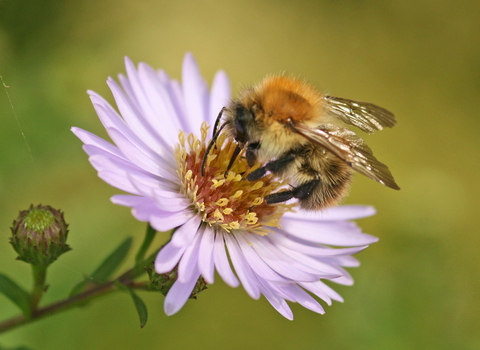
Common Carder Bee ©Rachel Scopes
Common carder bee
The common carder bee is a fluffy, gingery bumble bee that can often be found in gardens and woods, and on farmland and heaths. It is a social bee, nesting in cavities, old birds' nests and mossy lawns.
Scientific name
Bombus pascuorumWhen to see
March to NovemberSpecies information
Category
Statistics
Length: 1.3cmCommon.
